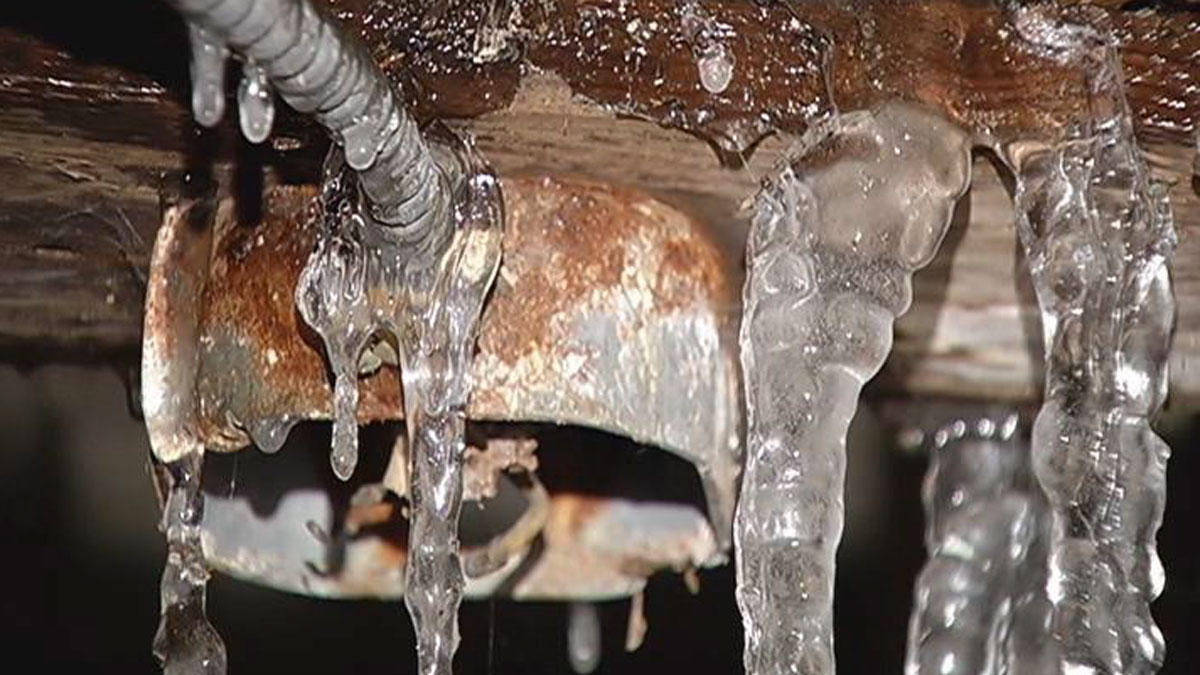Crucial Advice to Protect Against Frozen Plumbing in Cold Weather
Crucial Advice to Protect Against Frozen Plumbing in Cold Weather
Blog Article
The writer is making several great observations relating to Preventing and dealing with frozen pipes overall in this content down below.

Cold weather can wreak havoc on your plumbing, specifically by freezing pipelines. Here's exactly how to stop it from happening and what to do if it does.
Intro
As temperature levels drop, the risk of frozen pipelines rises, potentially bring about expensive repair work and water damages. Understanding exactly how to stop icy pipelines is essential for home owners in cold environments.
Recognizing Frozen Pipelines
What triggers pipelines to ice up?
Pipelines freeze when subjected to temperatures listed below 32 ° F (0 ° C) for prolonged periods. As water inside the pipelines freezes, it broadens, putting pressure on the pipe walls and possibly causing them to burst.
Threats and damages
Frozen pipes can bring about water system disturbances, home damage, and expensive repair work. Ruptured pipes can flooding homes and trigger substantial structural damages.
Indications of Frozen Piping
Identifying icy pipes early can prevent them from bursting.
How to identify icy pipelines
Try to find lowered water flow from faucets, uncommon odors or sounds from pipelines, and visible frost on subjected pipelines.
Prevention Tips
Insulating vulnerable pipelines
Wrap pipelines in insulation sleeves or make use of heat tape to protect them from freezing temperature levels. Focus on pipelines in unheated or exterior locations of the home.
Home heating methods
Keep indoor rooms effectively warmed, especially locations with plumbing. Open up cabinet doors to permit cozy air to distribute around pipelines under sinks.
Shielding Outdoor Plumbing
Garden pipes and exterior faucets
Disconnect and drain garden pipes prior to winter. Mount frost-proof faucets or cover exterior taps with insulated caps.
What to Do If Your Pipelines Freeze
Immediate activities to take
If you suspect frozen pipes, keep taps open to ease stress as the ice melts. Use a hairdryer or towels soaked in hot water to thaw pipes slowly.
Long-Term Solutions
Structural changes
Consider rerouting pipelines away from outside walls or unheated areas. Add added insulation to attic rooms, basements, and crawl spaces.
Updating insulation
Purchase high-quality insulation for pipelines, attics, and wall surfaces. Proper insulation aids keep regular temperatures and lowers the threat of frozen pipes.
Verdict
Avoiding icy pipes calls for aggressive measures and fast feedbacks. By comprehending the causes, indications, and safety nets, home owners can shield their pipes throughout winter.
6 Proven Ways to Prevent Frozen Pipes and Protect Your Home
Disconnect and Drain Garden Hoses
Before winter arrives, start by disconnecting your garden hoses and draining any remaining water. Close the shut-off valves that supply outdoor hose bibs and leave the outdoor faucet open to allow any residual water to drain. For extra protection, consider using faucet covers throughout the colder months. It’s also important to drain water from any sprinkler supply lines following the manufacturer’s directions.
Insulate Exposed Pipes
Insulating your pipes is an effective way to prevent freezing. Pipe insulation is readily available at home improvement stores and is relatively inexpensive. Pay close attention to pipes in unheated areas such as the attic, basement, crawl spaces, or garage. Apply foam insulation generously to create a buffer against the cold. You can also wrap your pipes in heat tape or thermostat-controlled heat cables for added warmth.
Seal Air Leaks
Inspect your home for any cracks or openings that could let in cold air. Seal any holes around the piping in interior or exterior walls, as well as the sill plates where your home rests on its foundation. Additionally, make sure to keep your garage door closed unless you’re entering or exiting. Leaving it open creates a significant air leak that can lead to frozen pipes.
Allow Warm Air Circulation
During cold snaps, it’s essential to allow warm air to circulate evenly throughout your home. Leave interior doors ajar to promote better airflow. Open kitchen and bathroom cabinets to help distribute heat consistently around the rooms. If you have small children or pets, be sure to remove any household chemicals or potentially harmful cleaners from open cabinets for safety.
Let Faucets Drip
A small trickle of water can make a big difference in preventing ice formation inside your pipes. When temperatures drop significantly, start a drip of water from all faucets served by exposed pipes. This continuous flow helps prevent the water from freezing. Additionally, running a few faucets slightly can relieve pressure inside the pipes, reducing the chances of a rupture if the water inside does freeze.
https://choateshvac.com/6-proven-ways-to-prevent-frozen-pipes-and-protect-your-home/

Do you enjoy more info about Preventing and dealing with frozen pipes? Give a remark down the page. We would be glad to hear your thoughts about this piece. We hope that you visit us again later on. Do you know about somebody who is fascinated about the topic? Feel free to promote it. We take joy in reading our article about 6 Ways to Prevent Frozen Pipes.
Click Here Report this page